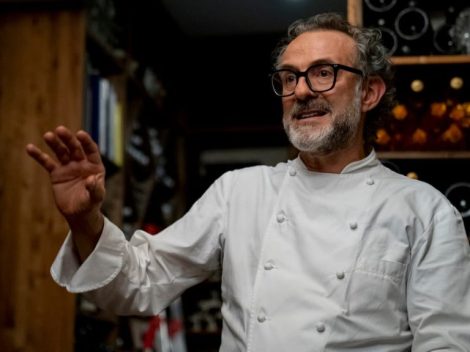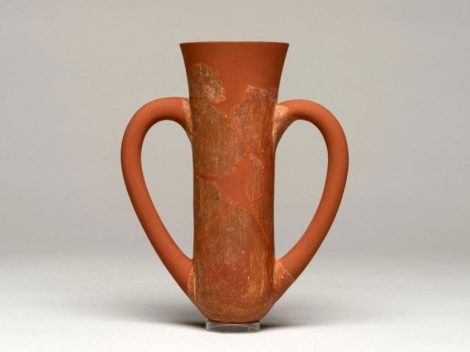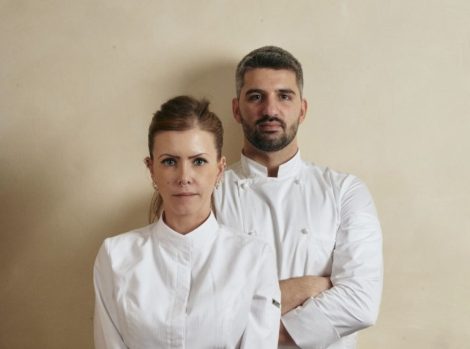Few people know about Royal Food Caviar, but not because it lacks quality or is new to the Italian black gold sector. The sturgeon farm, Acipenser srl, began its journey in the early 1990s by converting a former trout farm, and took off in 1995. Located in Calvisano, in the Bassa Bresciana area known for captive sturgeon production, it was created by Carlo Dalla Rosa, a doctor in Animal Production Sciences specializing in fish farming, who has dedicated his life to studying and farming sturgeon. The first extraction of eggs took place in 2005.
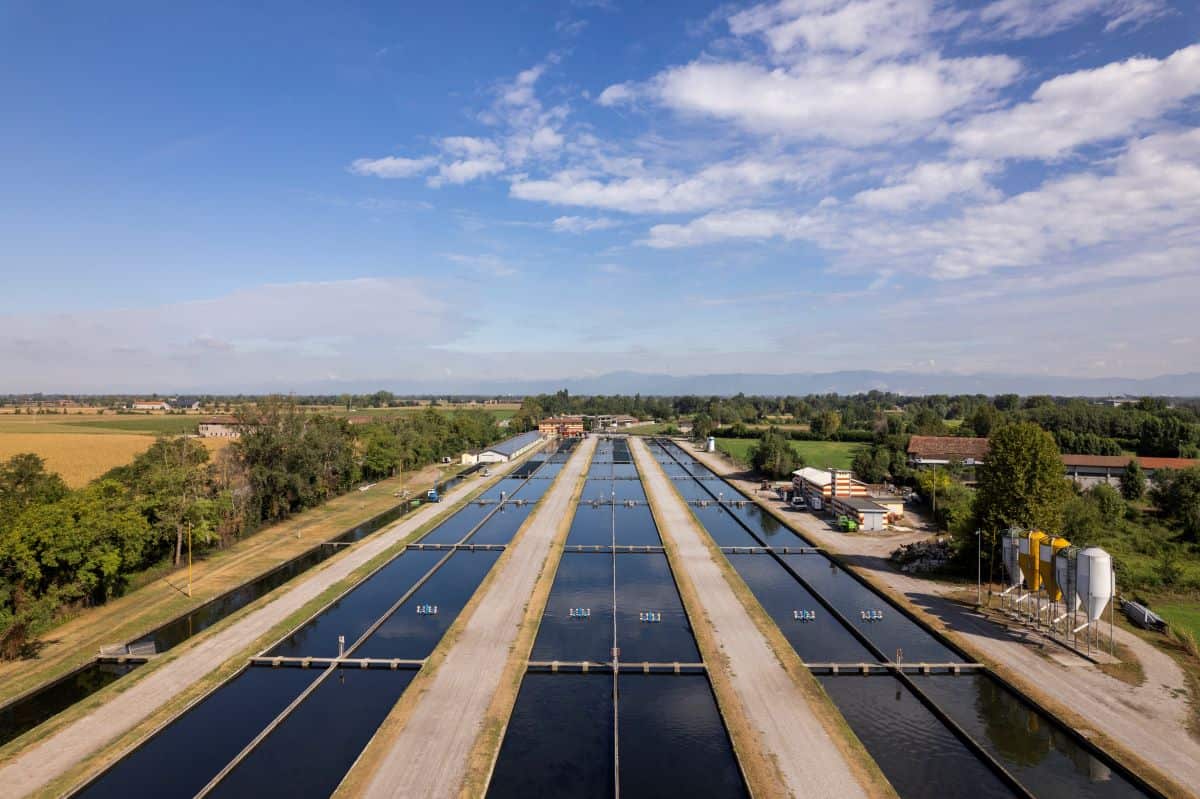
The birth of the brand
Until about ten years ago, the caviar obtained from the female sturgeons at Acipenser srl was processed and destined for foreign markets. Then came a shift in strategies and markets, a new brand, and significant work on the image, leading to the founding of Royal Food Caviar in 2011 by Nancy D’Aiuto, wife of Carlo Dalla Rosa, who was drawn into her husband’s passion and now manages the sale of the company’s caviar in Italy to private individuals, international jet-set personalities, and starred restaurants: “We serve Philippe Léveillé, chef at Miramonti l’Altro in Concesio, and Matias Perdomo, chef-owner of Contraste in Milan,” lists Nancy D’Aiuto, “and recently, the Prince of Monaco.”
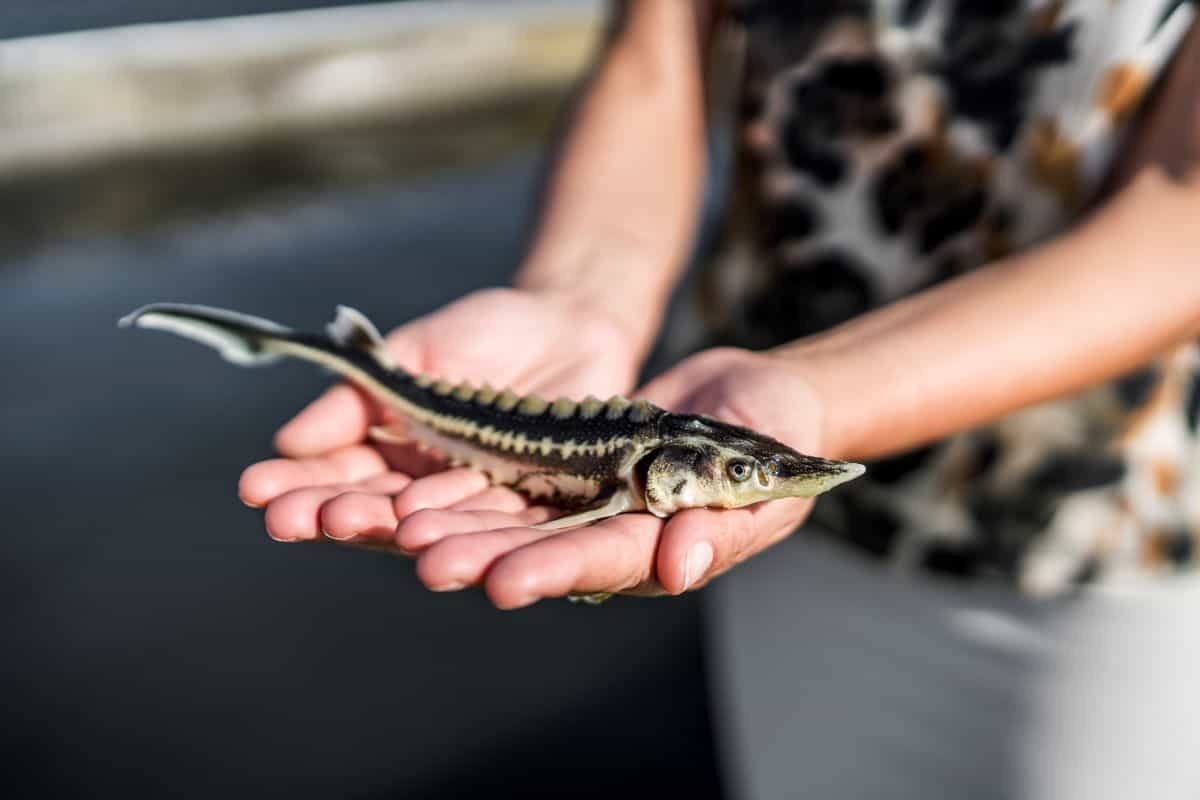
The sturgeon species farmed
Acipenser farms Beluga sturgeon, albino Sterlet, Russian sturgeon, Stellate sturgeon, and Siberian sturgeon, swimming in 80 outdoor tanks and 75 indoor ones (the latter for the nursery) covering a total of 10 hectares of land and more than a kilometre in length. Each species is followed through its entire biological cycle: the fish are separated into different tanks according to type, age, and the stage of female maturation. Only the processing of the caviar is done offsite at a specialized Italian company.
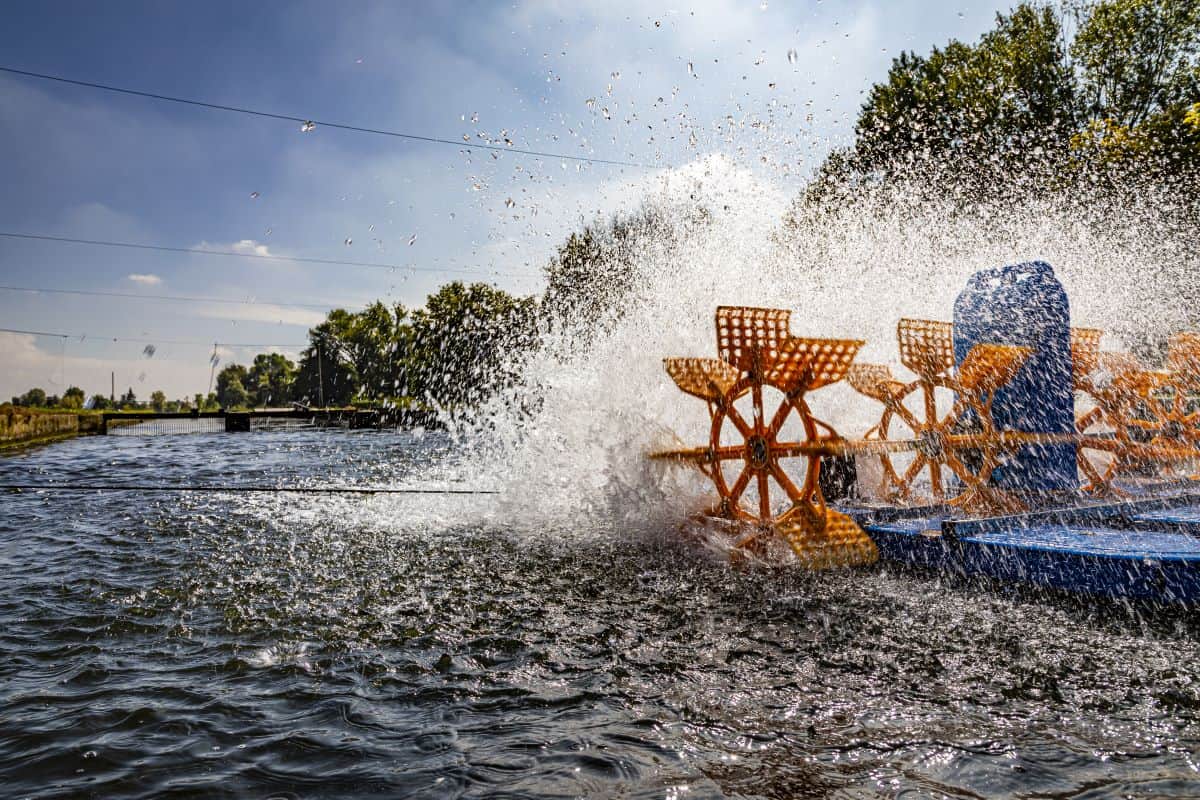
Friend of the sea certified sustainability
This is a farm that represents a flagship in a sector that had to be invented from scratch, with nothing taken for granted. “No one was sure that female sturgeon would produce eggs in captivity,” explains Carlo Dalla Rosa, who is considered something of a father of sturgeon farming in Italy. The quality of Royal Food Caviar’s black gold is the result of a series of careful considerations: low fish density per tank, constant water temperature around 15°C, specific balanced and GMO-free feeds based on fish oil and meal, and rigorous health and hygiene controls.
What makes a difference is the abundant spring water supply, which allows for a complete natural water exchange within 4-6 hours. This ensures clean tanks, a constantly clean environment, disease prevention, and proper feed distribution. These considerations, along with the recovery and maintenance of endangered species and genetics—particularly the sturgeon, which has been a protected species since 1998—and research into the use of alternative, low-impact energy sources, have earned Acipenser srl the Friend of The Sea certification.
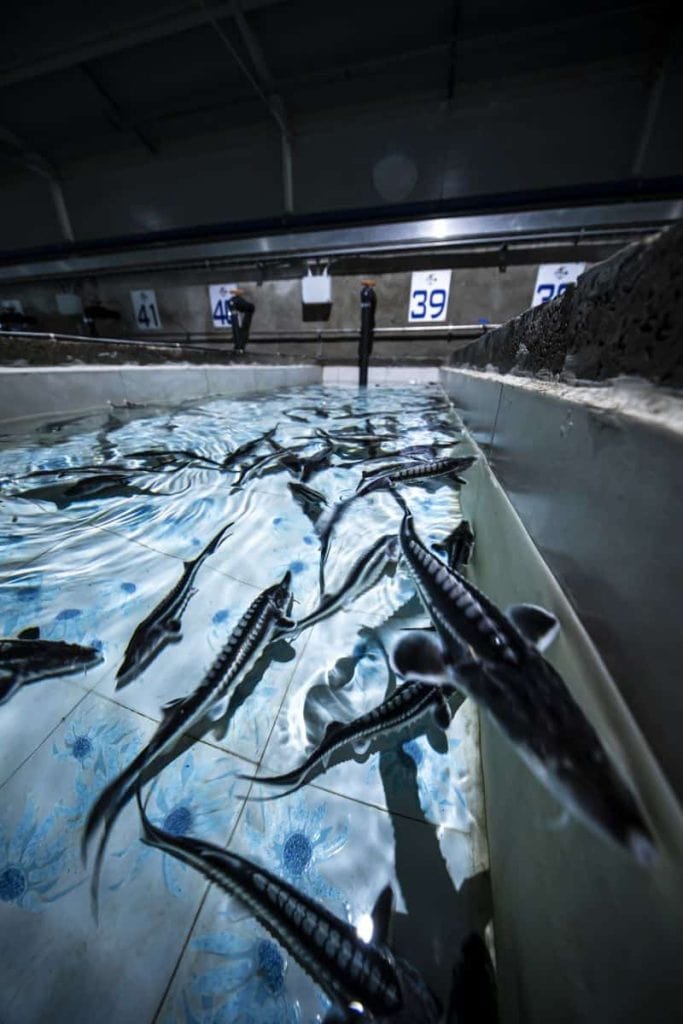
Royal food caviar's Black Gold
Between November and April, the female sturgeons that have reached the right degree of ovulation are transferred to a specialized laboratory where the eggs are extracted and processed fresh by hand. They are then salted using the traditional Malossol method (from the Russian for “lightly salted”) and stored in the fridge for about two months to mature in the salt.
There are about ten types of caviar available, ranging from the more accessible Siberian, with an immediate, iodized flavour reminiscent of oysters and seaweed with a hazelnut aftertaste, to the more complex Oscietra (from Russian sturgeon), Sevruga (from Stellate sturgeon), Beluga In (the “tsar’s caviar”), and Club Selection (the top eggs from the annual extraction campaign), to the golden Albino (from a rare albino variant of the Sterlet sturgeon) and the limited-edition diamonds: the aromatic Imperiale, from eggs of very mature female sturgeons in their second or third ovulation, and the precious Almas, with eggs ranging from light yellow to pearl white, extracted from a rare genetic variety of Beluga, Russian, or Siberian sturgeon, “one in tens of thousands of specimens,” specifies Nancy D’Aiuto.
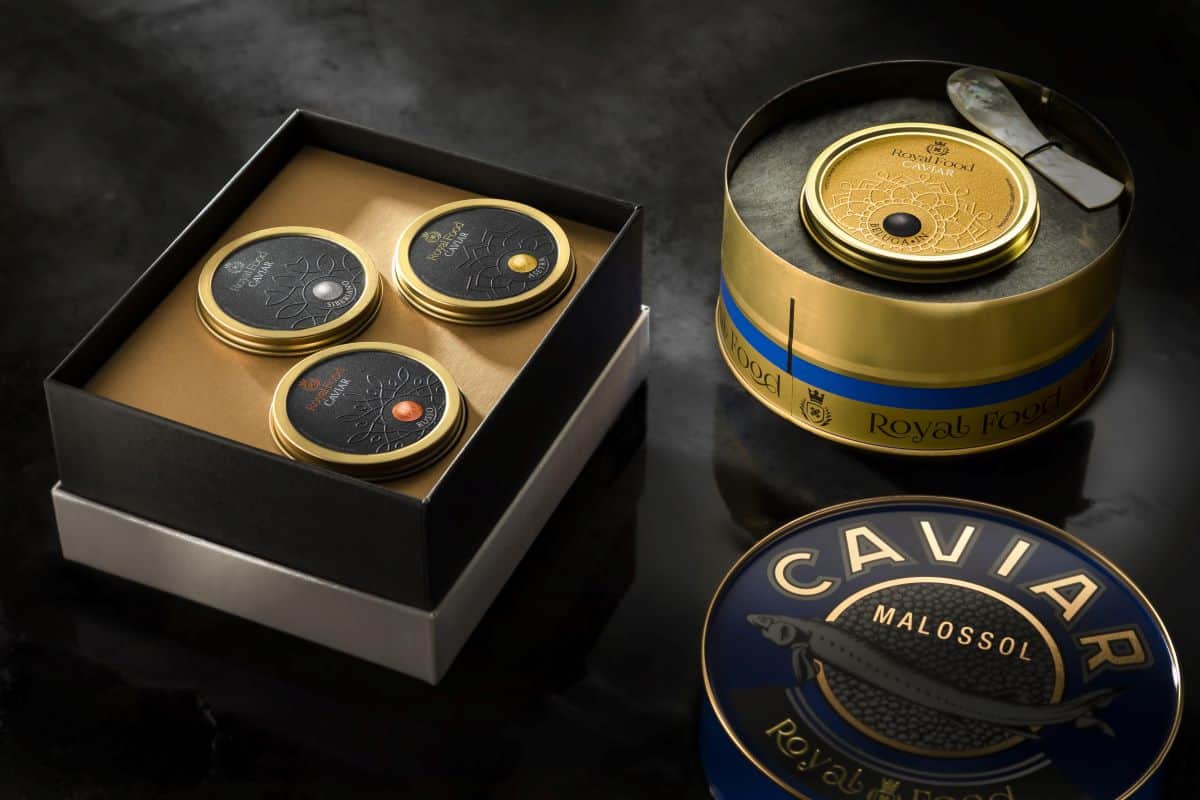
The best way to taste caviar
"On the back of the hand, in the hollow between the index finger and thumb, and pure, accompanied by a good glass of white wine, preferably dry, not too aromatic, and not too old: Riesling, Pinot Bianco, Ribolla Gialla."
As for sturgeon meat: "We don’t sell it fresh, nor do we process it into preserves or smoked products. We freeze it and send it abroad, where it is appreciated. We are purists!"
Acipenser-Royal Food Caviar - Calvisano (BS) - via Kennedy - 3440649422 - royalfoodcaviar.com

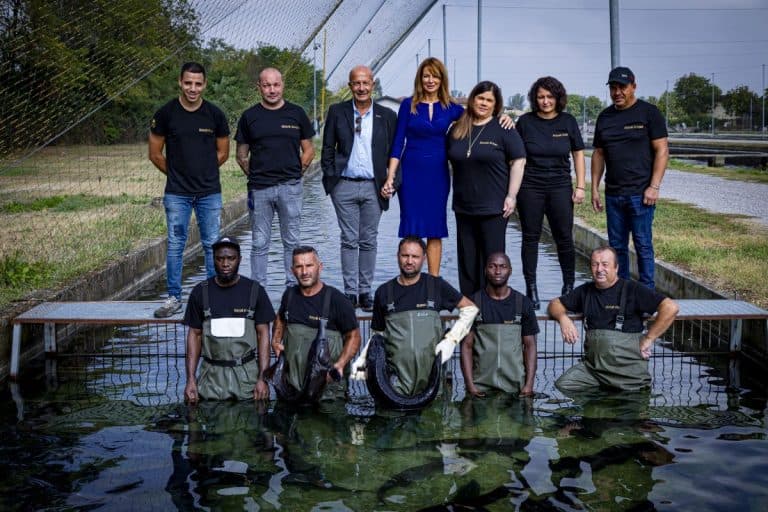
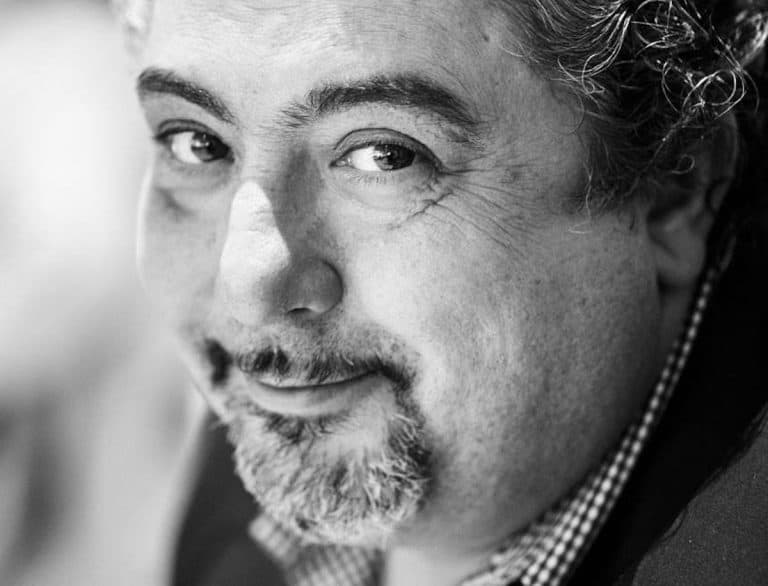 Farewell cacio e pepe in New York. "With tariffs, Pecorino Romano will also become more expensive." The warning from Giuseppe Di Martino
Farewell cacio e pepe in New York. "With tariffs, Pecorino Romano will also become more expensive." The warning from Giuseppe Di Martino Against tariffs? Here are the US foods that could be "hit"
Against tariffs? Here are the US foods that could be "hit"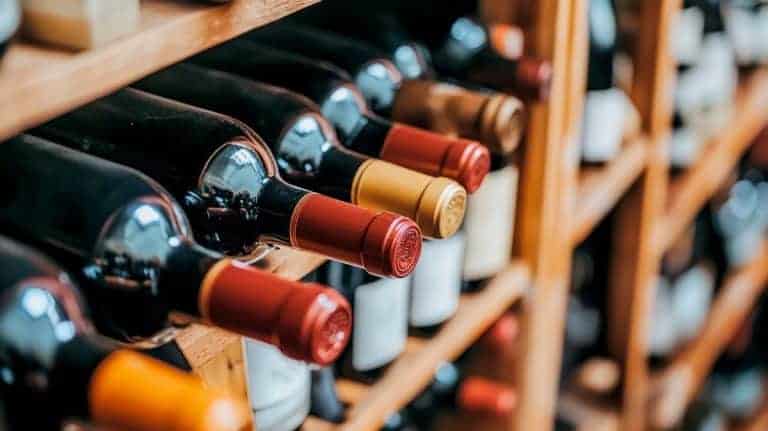 US tariffs: here are the Italian wines most at risk, from Pinot Grigio to Chianti Classico
US tariffs: here are the Italian wines most at risk, from Pinot Grigio to Chianti Classico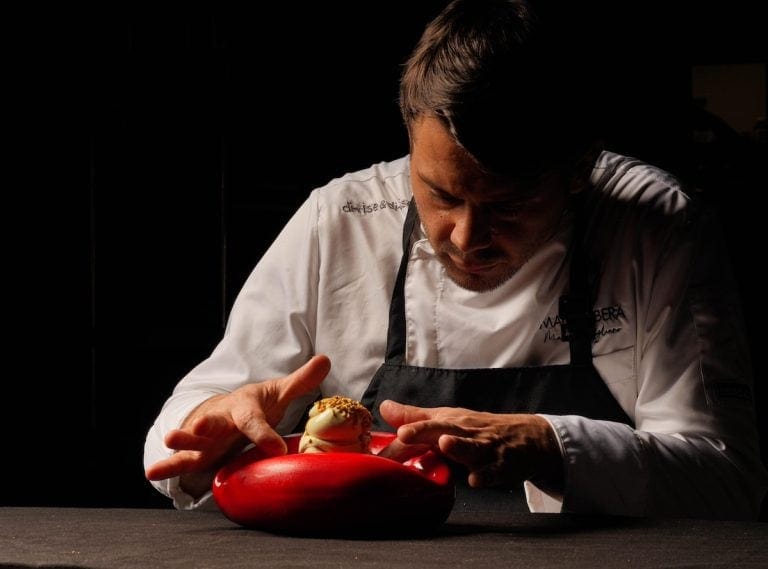 "With U.S. tariffs, buffalo mozzarella will cost almost double. We're ruined." The outburst of an Italian chef in Miami
"With U.S. tariffs, buffalo mozzarella will cost almost double. We're ruined." The outburst of an Italian chef in Miami "With US tariffs, extremely high risk for Italian wine: strike deals with buyers immediately to absorb extra costs." UIV’s proposal
"With US tariffs, extremely high risk for Italian wine: strike deals with buyers immediately to absorb extra costs." UIV’s proposal

